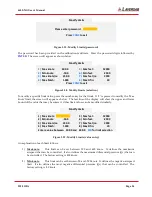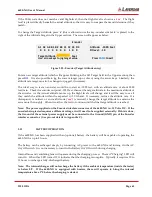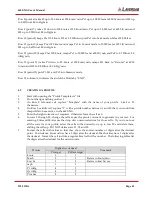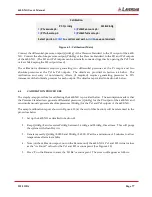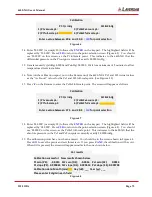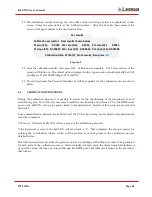
6600-NG User’s Manual
125-9110A
Page 70
Qc mbar
2
2
Pt psi
3
3
Qc psi
3
3
Pt mmHg
2
2
Qc mmHg
2
2
Pt kpa
3
3
Qc kpa
3
3
EPR
3
3
Rate is in inHg/min
Ps1 units
Digits after decimal
Comment
Ps1 target
Ps1 Rate target
Feet
0
0
Meters
1
2
Rate is in meters/sec
inHg
4
3
Mbar
2
2
Psi
3
3
mmHg
2
2
kpa
3
3
Ps2 units
Digits after decimal
Comment
Ps2 target
Ps2 Rate target
inHg
4
3
Diff. inHg
4
3
mbar
2
2
Diff. mbar
2
2
psi
3
3
Diff. psi
3
3
mmHg
2
2
Diff. mmHg
2
2
kpa
3
3
Diff. kpa
3
3
Feet
0
0
Meters
1
2
Rate is in meters/sec
knots
1
1
Km/hr
1
2
Rate is in km/hr/sec
8.
Check the values, units and modes in your profile to ensure they are all valid and correct. If you
are going into the Leak mode at any point, then make sure that you achieve that point in Control
mode before you actually change to Leak mode. For example, if you want to perform a Leak at
18,000 feet, then you must have one point in Control mode which takes the Ps1 output to 18,000
feet, followed by another point where the Ps1 output is put into Leak mode at 18,000 feet.
9.
Now that the profile is complete, save the profile as an Excel file ( .xls file) using the name of the
profile as the filename. Then save it again using the “Save As” command but this time change
the file type (using the “Save as type:” drop-down selection ) to “Text - Tab delimited”. Use the
profile name as the filename again. You will get many warnings from Excel about the
incompatibility of this text file, but simply say “Yes” to all the warnings. Once you have saved

